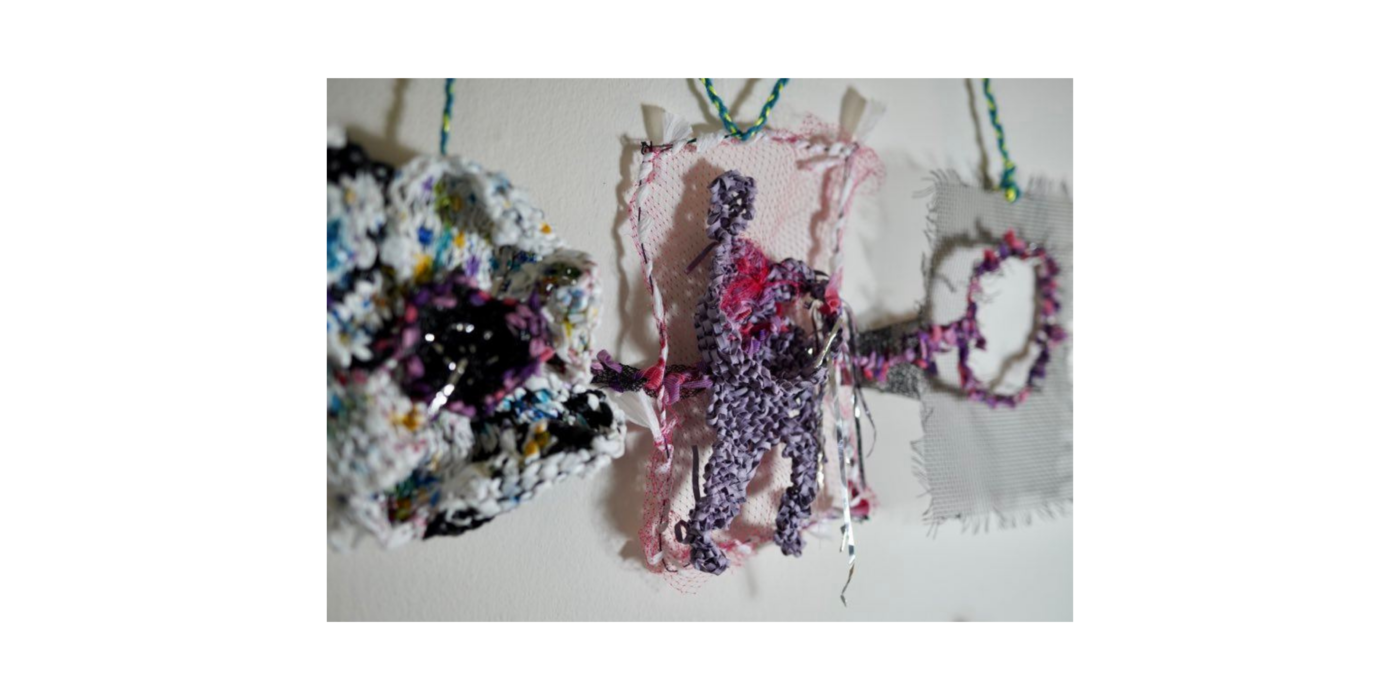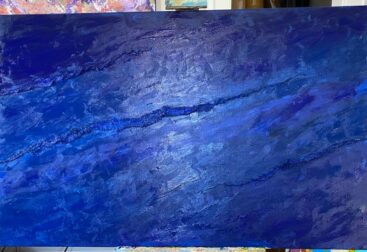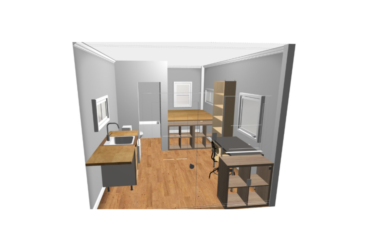My speculative play for this project was focused on re-imagining what we teach, learn, and value in higher education, shifting to place more value on knowledge and skills gained through lived experience and particularly emphasizing the teaching and learning of crip science, survivor skills, and care work. As I started, I had a couple of initial questions: What would it look like to truly value and reward care work? What would it look like to treat care work, crip science, and survivor skills as worthy of study and sharing? I started developing additional questions about the structure of a possible educational space that would focus on the study of these areas. What would it look like to build a non-hierarchical learning space where everyone is seen as contributing equally, where everyone is considered an expert and is seen as having something valuable to teach others? What would it look like to create a porous and adaptable learning space where people are free to truly come as they are and engage in the ways that work for them, for as long or as short of a time as they need?
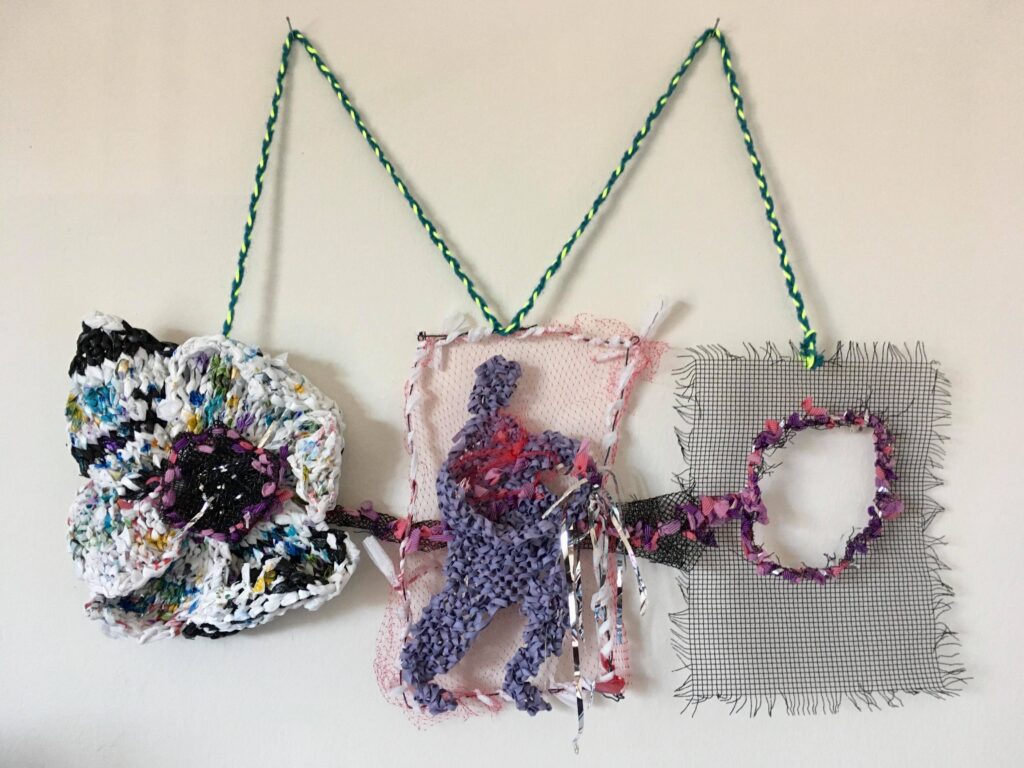
In the early stages of working through big ideas and concepts, I do my best thinking with my hands, so I approached this piece as a very tactile meditation on the themes of care work, crip science, and survivor skills, letting the piece emerge as I worked on it and not trying to force it in any particular direction. The resulting creative artifact, “making do/making joy” is a meditation on these themes that aims to capture the feeling of this imagined educational space.
As I worked on each panel, I held a set of questions about my imagined educational space.
Care Work
materials: plastic bags, armature wire mesh, scrap yarn, balloon tassels, acrylic ink
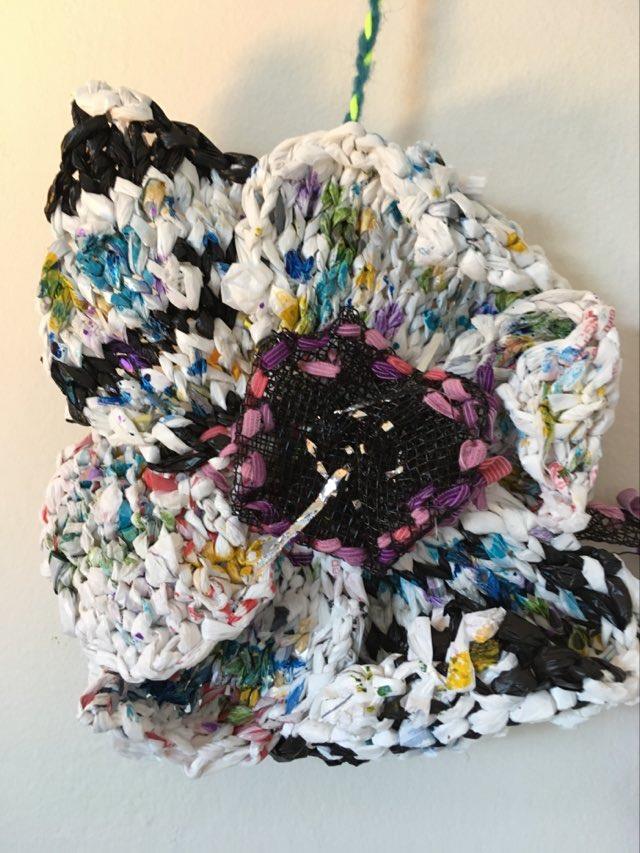
What would it look like to have an educational space that recognizes care as fundamental and truly values care work?
What would it look like for this space to facilitate opportunities for everyone to give and receive care?
How could this space help everyone fully own their own needs, acknowledge where and when they need assistance, and work with their communities to have those needs met?
How could this space build sustainable networks of care and interdependence?
Crip Science
materials: scrap yarn, plastic mesh, plastic bag, balloon tassels, copper wire, armature wire mesh
What can crip science teach us about navigating and adapting the built world, about resilience and innovation?
How can we all find openings for small pockets of joy?
What does it look like to have an educational space that is fully accessible, not just for learners but for teachers?
How do you run an organization on crip time?
What does it look like to continually re-design a space and an organization to respond to constantly shifting accessibility needs?
How would it feel if we saw every request for accommodations as an invitation rather than an inconvenience?
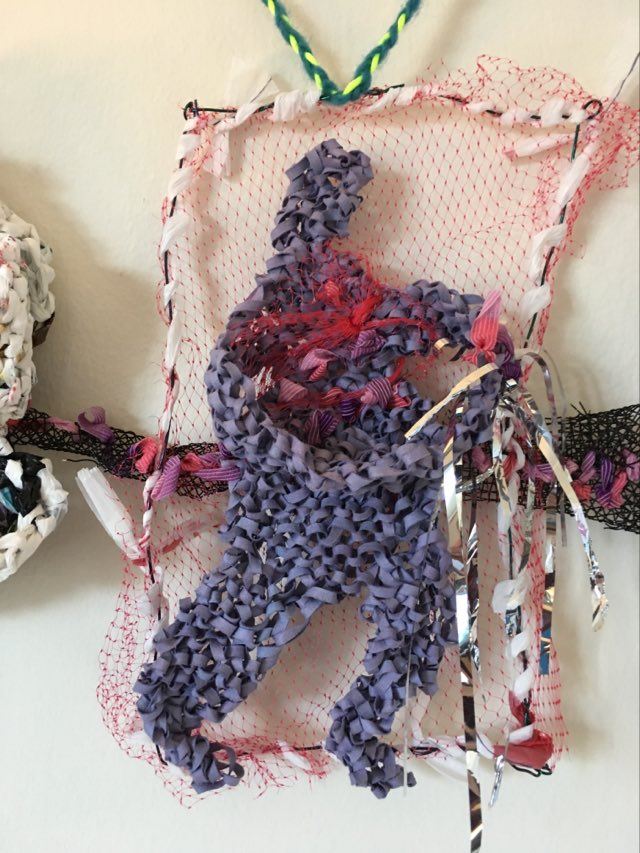
Survivor Skills
materials: scrap yarn, plastic mesh, plastic bag, balloon tassels, copper wire, armature wire mesh
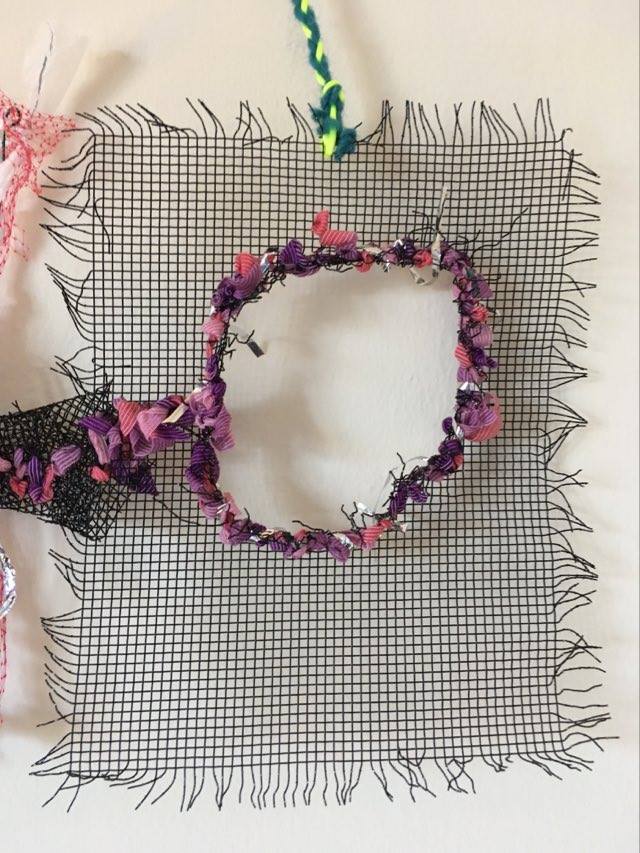
How do we make space for survivors to own and share the knowledge and skills they have developed through their experiences of trauma and healing?
How do we create a space that welcomes messy healing, good days and bad days? How do we create opportunities for people to re-learn how to connect with their own bodies and feel their way back to pleasure, joy, community, and interdependence?
How do we create a space that works to heal trauma without aiming for a cure?
Sources and Inspiration
The assigned readings for LDES 495: Critical Speculative Design for Antiracism, particularly Ebony and Ivy, We Want to Do More Than Survive, and Grande’s “Refusing The University” helped guide me towards the particular points I wanted to push back against in this project – the ways of knowing that we value, the types of engagement and work we reward in our current education system – and started me thinking about what alternative possibilities might look like.
Emergent Strategy and Gunn’s “Black Feminist Futurity: From Survival Rhetoric to Radical Speculation” helped me think through how I wanted to approach the project in terms of process and materials.
Care Work, Emergent Strategy, and Disability Visibility helped to inform how I thought about the possible structure of my imagined educational space, while Design Justice and What a Body Can Do provided me with examples of community-driven, iterative design that is responsive to the unique needs of specific individuals and contexts, moving away from one-size-fits all access solutions.
Care Work, What a Body Can Do, and Emergent Strategy heavily shaped my approach to thinking about care, need, assistance, and interdependence as I worked on the care work panel. The Body Keeps the Score and Care Work were particularly helpful me think through what it looks like to heal from and live with trauma, challenging linear notions of recovery, emphasizing the role of community support and reconnecting with one’s body when healing from trauma, and highlighting that survivors have gained valuable skills and expertise as they have navigated the world as survivors.
Bibliography
Brown, Adrienne Maree. Emergent Strategy: Shaping Change, Changing Worlds. Chico, CA: AK Press. 2017.
——. Pleasure Activism: The Politics of Feeling Good. Chico, CA: AK Press. 2019.
Costanza-Chock, Sasha. Design Justice: Community-Led Practices to Build the Worlds We Need. Cambridge: The MIT Press. 2020.
Grande, Sandy. “Refusing the University.” Toward What Justice: Describing Diverse Dreams of Justice in Education, edited by Eve Tuck and K. Wayne Yang. Routledge, 2018, pp. 47-66.
Gunn, Caitlin. “Black Feminist Futurity: From Survival Rhetoric to Radical Speculation”. Feral Feminisms, no. 9, 2019, pp. 15-20.
Hendren, Sara. What A Body Can Do: How We Meet the Built World. New York: Riverhead Books. 2020.
Love, Bettina. We Want to Do More Than Survive: Abolitionist Teaching and the Pursuit of Educational Freedom. Boston: Beacon Press. 2019.
Piepzna-Samarasinha, Leah Lakshmi. Care Work: Dreaming Disability Justice. Vancouver, BC: Arsenal Pulp Press. 2018.
Schalk, Sami. Bodyminds Reimagined: (Dis)ability, Race, and Gender in Black Women’s Speculative Fiction. Durham: Duke University Press. 2018.
Van der Kolk, Bessel. The Body Keeps the Score: Brain, Mind, and Body in the Healing of Trauma. New York: Penguin Books. 2014.
Wilder, Craig Steven. Ebony & Ivy: Race, Slavery, and the Troubled History of American Universities. New York: Bloomsbury Press. 2013.
